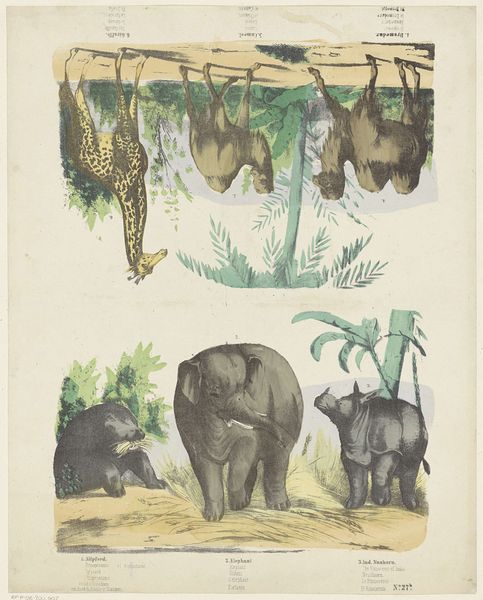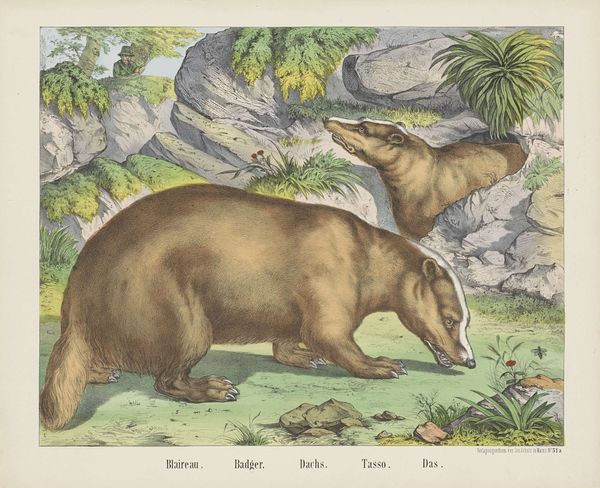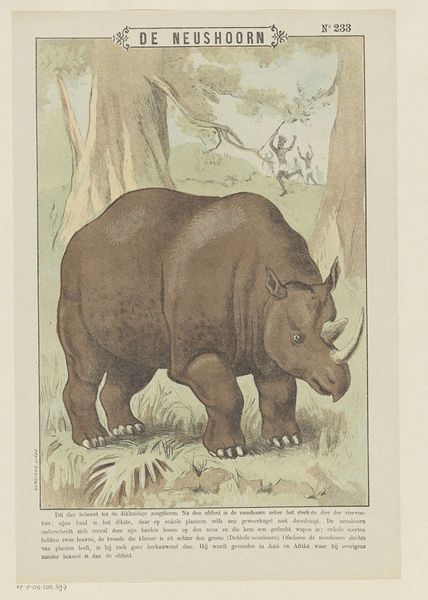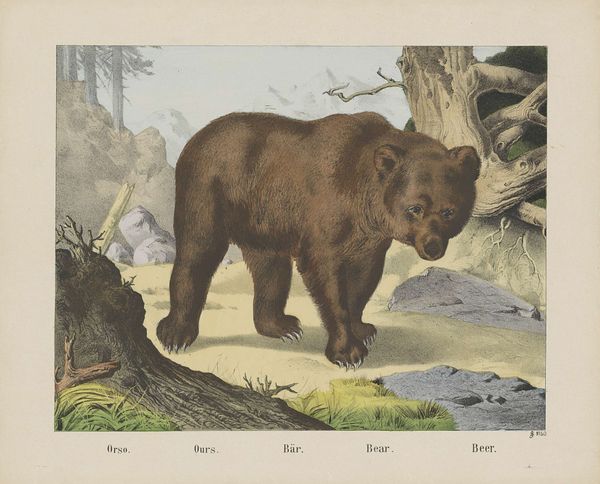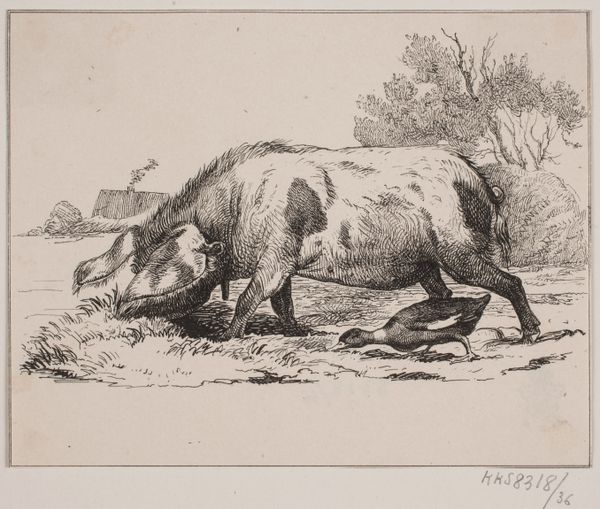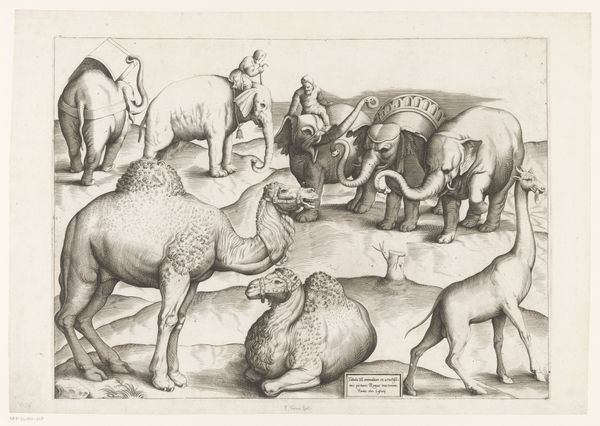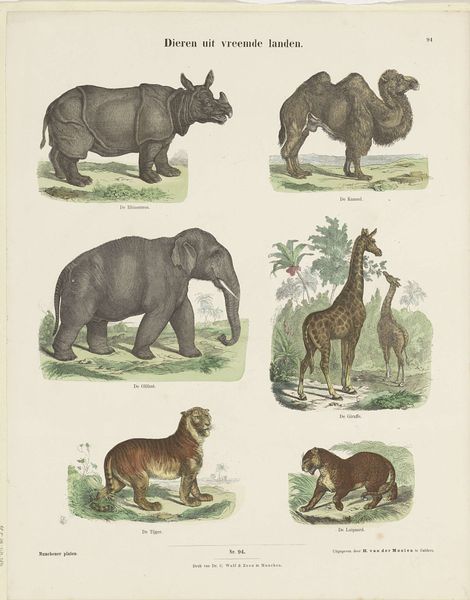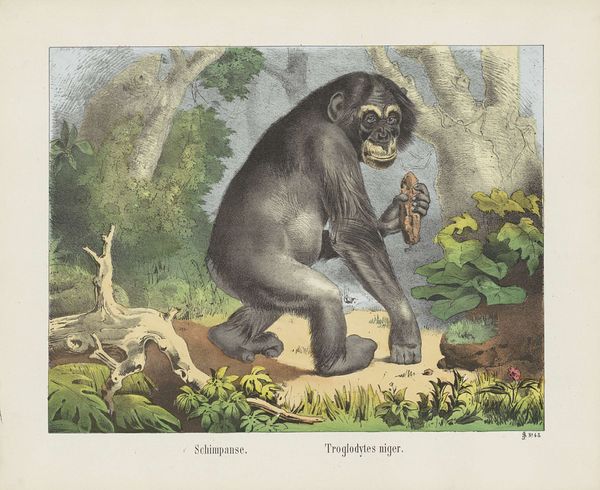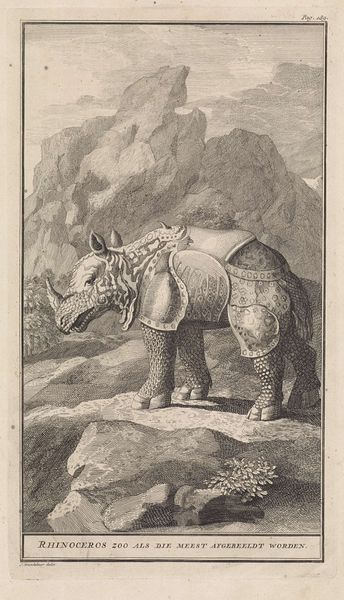
Rhinocereros indicus. / Rinoceronte. / Nashorn. / Rhinoceros. / Neushoren 1829 - 1880
0:00
0:00
firmajosephscholz
Rijksmuseum
print, engraving
# print
#
landscape
#
figuration
#
watercolour illustration
#
cartoon carciture
#
naturalism
#
engraving
Dimensions: height 350 mm, width 430 mm
Copyright: Rijks Museum: Open Domain
Curator: Right, let's discuss this intriguing piece: "Rhinoceros indicus," an engraving from sometime between 1829 and 1880, attributed to firma Joseph Scholz. It resides here at the Rijksmuseum. Editor: It has a strikingly primitive feel. Look at that beast! So imposing, even a little cartoonish despite the setting. I mean, that scaly hide practically vibrates. Do we know more about the printing process employed here? Curator: Firma Joseph Scholz was known for producing educational prints, often intended for children. We see a naturalistic portrayal intended to instruct about the Indian rhinoceros in its habitat. The foliage, while somewhat stylized, offers a suggestion of its South Asian home. The animal as a symbol resonates with primal strength, perhaps a veiled reference to colonial power. Editor: I am more intrigued by that implied reproducibility afforded by printing technology. And that informs how people come to know something like a rhino that few in Europe had ever witnessed firsthand. What papers, what inks were they using? That level of access completely transforms the potential meaning and power held by the animal itself. Did they intend these for scientific texts, or something broader? Curator: Probably more a blend of education and entertainment. These prints would have circulated widely, shaping public perception and awareness. Even its location, within an ostensibly European context, impacts that symbol! The artist clearly intends to inspire curiosity—perhaps even a touch of the sublime. Editor: Well, yes, I imagine children who encountered it, might later learn of these far-off lands. It makes you wonder about the distribution and lifespan of objects like this. I agree about colonial connections implied. How do popular representations like this both reflect and distort colonial realities and economic interests. Curator: Precisely. Consider how it plays into a developing global consciousness and how naturalistic renderings came to symbolize particular regions or even political agendas. The layering is significant, isn't it? It’s not just about scientific classification, but also cultural coding. Editor: So even in a relatively simple print like this one, we can uncover pretty complex dialogues between material reality, industrial processes, colonial impulses, and how images of nature help build worldviews. Pretty remarkable. Curator: It underscores the power that even seemingly straightforward illustrations hold and can tell a global story!
Comments
No comments
Be the first to comment and join the conversation on the ultimate creative platform.
